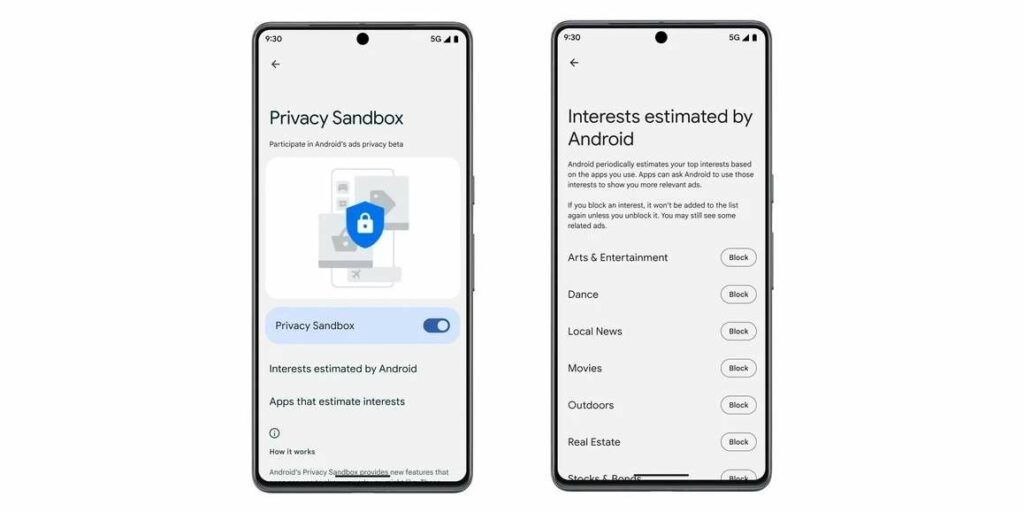It was supposed to be part of the Android 13 operating system, but the feature didn’t make it into the system after all. We’re talking about the Privacy Sandbox feature, which is supposed to replace third-party cookies and advertising IDs on Android. Google’s goal is to display relevant content and ads on phones, measure their effectiveness and reach effectively, while limiting user tracking. This way, even after all the changes, Google can still claim to maintain mobile user privacy by default.
In particular, Google wants to limit cross-app identification, which is now provided by so-called Advertising ID. Of course, the US giant doesn’t want to lose profits from ads, so the Privacy Sandbox is meant to be a kind of middle ground where both Google and users can find their way.

Within the single screenshot provided by Google, you can see the appearance of the beta version of the Privacy Sandbox module. The first button will show your interests, which Android will “snitch” on you. The second button will then reveal your installed apps, which are used to guess what your interests, hobbies, preferences and needs are. The screenshot on the right, in turn, shows the output from the regular estimation of your most important interests. For example, based on what information you search for on the internet.
Sandbox will know everything about you
Google simply can’t afford to build an Apple-like system into Android and its other systems and applications. It would have a big financial impact, and not just for Google. That’s why it wants to find a solution that works for users, developers and advertising companies.
He introduced the Android Privacy Sandbox to offer an optimal solution. Unfortunately, at the moment, the best way is yet to be found. Collaborations with various companies have been launched and work is starting on a solution. Google does not want to offer the option of not tracking user behavior, but at the same time wants to maintain the possible analysis of user behavior.

Android Privacy Sandbox is intended to offer a more comprehensive tool. While there’s no clear idea yet how everything will work, the Topics API is in play and is being built for Chrome as well. Instead of tracking snippets of information across the system, Android itself will offer topics to developers and system advertisers on what users are interested in.
You could say that the Android Privacy Sandbox will offer topics without the possibility of deep user tracking. The advertising system will then be given a topic and will decide what kind of ad it might be for a particular user. In addition to the Topics API, FLEDGE (First Locally-Executed Decision over Groups Experiment) technology is also in play. You could say that Android will handle the targeting itself and just “throw” approximate data to the ad systems.
At the moment, Google is using the ad ID on Android for ad targeting. This will last for at least two years before switching to the new system. This year, the company will roll out the first versions of the Android Privacy Sandbox and will be working on the most optimal method to accommodate all parties.

It can be expected that this system will not be completely autonomous. The user should have access to some data and influence what interests him and what does not. For now, we will have to wait and see what the Android Privacy Sandbox actually brings and how much it will change the advertising market. Google is going slow on everything and trying to involve as many players as possible in the discussion so as not to distort the market, as in the case of Apple’s solution.




Add comment